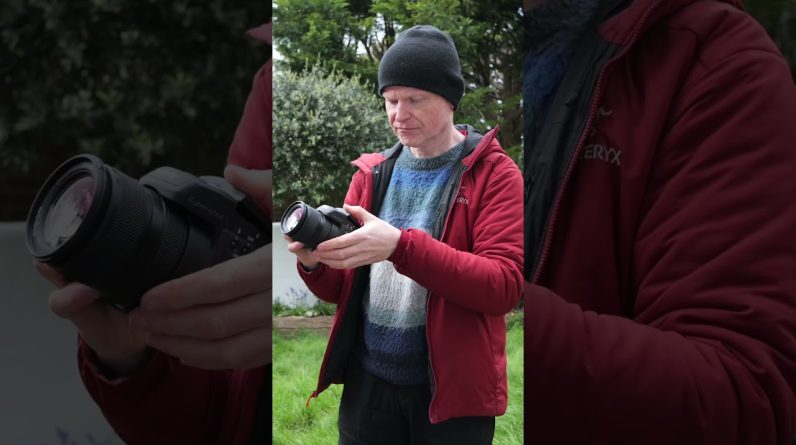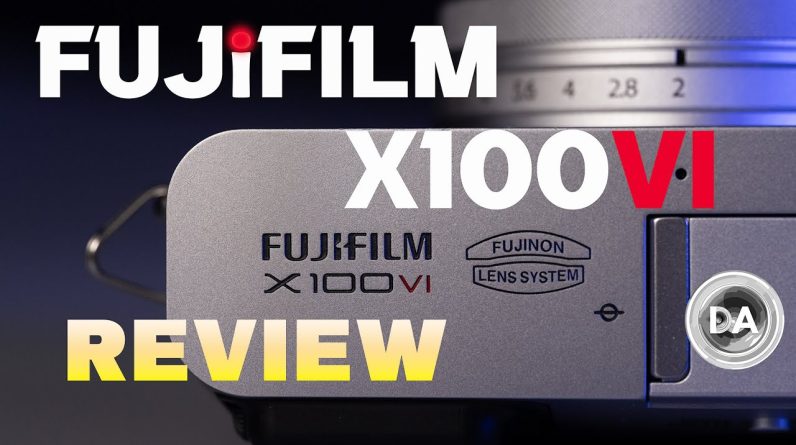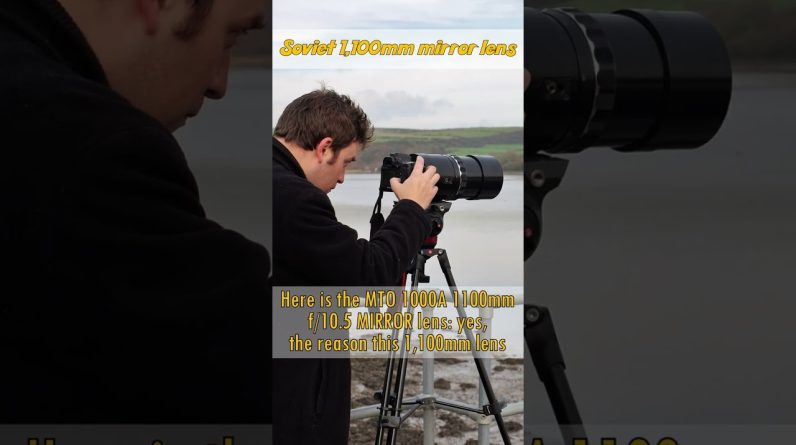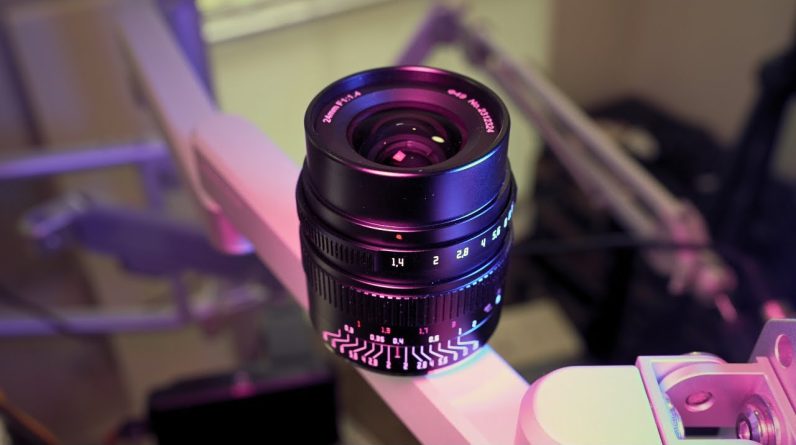[Music] Foreign Hi I'm Dustin Abbott and I'm here to Give you my second review in the series Of the samyang vaf lenses so at this Point there are three lenses that have Been released with the promise of two More to come in the series previously Released lenses are the 24 millimeter 35 Millimeter and 75 millimeter T 1.9 Lenses and you can see my overview video That covers the shared features and Design in this video here still to come Are a 45 millimeter along with a 20 Millimeter teep 1.9 lenses today we're Looking at the 35 millimeter T 1.9 now If you're not familiar with the concept Of the samyang vaf series these lenses Are hybrid lenses that recognize that Many modern photographers are hybrid Shooters and that most modern mirrorless Cameras are almost equally as Adept as Video recording devices as they are for Capturing Stills or photos And so as a recognition of that the Samyang vaf series allows you to have a Lot of cine lens type features in lenses That also have autofocus and can behave Pretty much like normal Um photo lenses as well and so they are Really really handy for a lot of Different things and the more that I Have used this series the more that I Appreciate some of the subtle aspects
That I'm discovering of design and so We're going to be doing that second Review in this series where we're going To look deeply at the 35 millimeter T 1.9 right after a word from our sponsor Are you ready to use that gear and show Off your skills viltrox is sponsoring a Global photo contest with more than Fifteen thousand dollars worth of prizes With one catch photos must be shot with A viltrox lens a panelist of Judges from Around the world including my friend Christopher Frost will select the Winners the contest runs from April 10th To June 10th and you can upload your Submissions to the link in the Description below first prize comes with Over four thousand dollars worth of year Including a Fujifilm xt5 and a viltrox AF 13 millimeter F 1.4 lens with Subsequent prizes loaded with lenses Tripods lights swag and gift cards there Is no cost to enter so get snapping Upload your best work and win big prizes In the viltrox global photo contest So you may have noticed my reference to T 1.9 and that is one of the aspects of A cine lens that is incorporated here as While photo lenses are typically Designated by their maximum f-stop or Aperture size which would correspond to F 1.8 in the tiny series that these Lenses are based off of but in the case Of cine lenses it is looking at the
Light transmission and so while you Might have a physical aperture of f 1.8 Which we do here it measures the amount Of light that actually reaches the Sensor and typically by the time you get Through the optical path the various Glass elements that make up that Optical Design there's a little bit of loss of Light in the process in this case it's Not all that significant and so an F 1.8 Lens has a t-stop of T 1.9 which is Quite efficient by lens design standards But what's important here is that we Have a consistency of T 1.9 across all Of the lenses which means that as you Switch hot swap one lens for another Your settings are able to stay the exact Same because the same amount of light is Going to reach the sensor this is all About standardization in this lineup and So we see that all of them are the exact Same size they have the exact same Feature set they're designed to handle Even when it comes down to the focus Ring to where the field is going to be Identical across the series so to look At those Dimensions this lens all of These lenses are 72.2 millimeters or 2.84 inches in diameter they are 72.1 Millimeters or 2.84 inches long and they All have a 58 millimeter front filter Thread they all weigh exactly 280 grams Or 9.6 ounces all of them share common Design of all the features here and so
That includes this metal front of the Lens that includes a metal bayonet Style Style ring at the front of the lens that Allows you to mount on accessories like This manual focus accessory that we'll Get to in just a moment What's interesting is there's not just a Bayonet Mount but much like the the Mount at the rear of the lens there's Also electronic contacts that is going To allow pass through of information and So when you have an accessory like this Mounted on there you're going to Continue to have electronic Communication throughout which is really Unique in its overall design As a part of the design we have tally Lamps at both the front of the lens and The side of the lens and so that allows You to evaluate recording either from The front or from the side you can Control and tweak the behavior of how The tally lamps function by using the Samyang lens station that runs you Anywhere between Thirty and fifty Dollars depending upon the sale price But I highly recommend getting it Because it allows you to do firmware Updates it allows you to tweak the Behavior of the lens in a in more ways Than ever before with these vaf lenses So it's certainly worth having I do have A video on how that all works and how to Do firmware updates if you want to check
That out here also included in the Design is that we have a focus hold Button and then we have a custom switch Custom switch with two positions and it Allows you to tweak the behavior of the Ring here depending upon what position You're in so for me I like to put have The first custom position to function as An aperture ring which is useful not Only for Stills but also for aperture Racking when doing video in the second Custom position I like to have that set Up to where you automatically go right Into manual focus mode and so you can Use the ring for manual focus at that Point All of these share a six weather sealing Points throughout the lens so starting At the rear gasket and then seal points Throughout giving you a nice thoroughly Sealed design which can be useful when The weather turns inclement now because Of that front bayonet Mount all of these Lenses are not designed to be used with A lens hood and so fortunately the front Element is a little bit recessed in all Of them and so far I've found as we're Going to see in this review that the Flare resistance is really quite good Even without that without that lens Hood Incorporated we also have an aperture Iris that is made of nine aperture Blades and as you can see here it does a Reasonably good job of retaining a
Circular shape we also see that there is A kind of a hybrid approach to the Aperture control and that when you are In Stills mode as you can see there are Some visible steps approximating f-stops As you go down however if you switch Into video mode you get a smoother Racking experience it functions more Like a clicklist experience and allows You to get better aperture racks than What you would if the lens or the Aperture was designed otherwise it's one Of those subtle touches that I picked up Out on after a while that just shows the Thought that's gone into making this a True High Hybrid experience there is a Linear Focus motor that drives autofocus More on autofocus in just a moment and We have a minimum Focus distance of 0.29 meters 29 centimeters and that Gives us a maximum magnification of 0.17 Times certainly not class leading but Right there in the hunt for being about The average of what you're going to see For a 35 millimeter lens and so while This is a little bit larger than what It's tiny series The 35 millimeter F 1.8 Was this lens is just there's they're so Nicely made the build quality is so much Nicer and that standardized feature set Of course is what is going to make these Really work now a quick word on the First accessory that has been released For these lenses same as promising
Others in the future but this is a Manual focus adapter and so you might Ask why do we need a manual focusing Adapter when we already have a good Manual focus ring the short answer to That is really in two different areas First of all when you have any kind of Mirrorless lens because it is designed To wear input on the focus ring runs Through the Focus motor there are no Hard stops at either minimum or Infinity Focus and also because of that same Issue you have no distance markings no Distance scale so while this is a linear Manual focus ring with a full 300 Degrees of rotation built onto the lens Itself you have no distance markings Somehow I'm not even quite sure how they Pulled it off but with this manual focus Accessory you get a few things first of All you get distance markings there so Giving you even higher more repeatable Results those distance markings come in Both metric and Imperial you also get Hard stops at both infinity and minimum Focus which is going to be incredibly Useful you're also getting a Standardized matte box for the this Typical 95 millimeter and the way that This designed is it's really easy to Lock into place and to remove it's just It's a quality design and it really Works and so already we have a really Nice manual focus experience but it just
Goes up to a higher degree for Repeatability and also just having all Of that visual Precision right there I Really really enjoy using that manual Focus accessory it's one of these things That really does help to set this series Of lenses apart from the run-of-the-mill Lenses that I typically review So let's talk about autofocus as noted We do have that linear Focus motor as a Part of the design and what we've got is A lens or a Focus motor that's tuned Really for again two different hybrid Functions so when it comes to to Stills Capturing uh focus is is quick Snappy Back and forth Um with very very little lag and Autofocus so zero problems there I found That when I was shooting for example the Shot of my son at Niagara Falls even Shooting at very very narrow depth of Field and putting a lot of stuff in the Foreground I was able to nail focus on His eye and I just found in general that I had zero problems with autofocus Here's a series that follows Ferrari as He moves around and you can see that it Stays nice and sticky on the eye as I do That but when you switch over into video Mode as we saw here instead of being Fast or abrupt we have a really Cinematic tuning and so in the focus Pools for example here you can see that They're not rushed but they're nice and
Cinematic but where that really plays Out nicely is say the shot where I'm Going along this icy branch and rather Than abrupt focused jumps that are going To draw your eye you can see that There's really smooth transitions there That allow the the damping the damping Of the focus pools to look more like They're manually done manual focus pools And so it's just much more artistic you Can see that and some of these other Clips here and so I really really Appreciate what they have done as far as The tuning of the Focus motor when it Comes to its work for video because you Are getting a more cinematic feel than What I see with most of the autofocus Lenses that I typically review Obviously this whole series is going to Work really well on a gimbal because You've got a great balance of size and Weight and obviously the ability to hot Swap because they're the exact same size And weight and the balance point is the Exact same so you're not going to have To do any kind of re-tuning in between So that obviously is going to be an Additional thing that makes this really Really useful and so in general I have Very very little to complain about when It comes to the autofocus I feel like They've just done the various things That they needed to do to make this lens Work on both levels and it does just
That it works great as a photography Lens it works great as a video lens as Well Now talking about the Optics in each one Of the things that is standardized Across these lenses that they are They're making sure that there is a Standardization of the actual color Color temperature and color rendering Coming off the optical glass now that's A huge thing and as you look across this Series you can see that as I switch Between the three lenses that I have Right now that I set a manual white Balance you can see that it's rendering Each one of these in an identical way so That's really really important for Getting consistent color at various Focal lengths and it makes them even More useful as a series which by the way As you're going to see my feeling is is That these lenses make most sense as a Series if you're going to use them in Conjunction with other lenses in the Series so some of the strengths and We'll dive more and kind of do a deep Dive in just a moment some of the Strengths here are obviously that great Color and great color accuracy there is A good cinematic look to both footage And to photography with great color Rendition bouquette is quite nice for a Lens like this and and there's good Sharpness not mind-blowing sharpness but
Good sharpness wide open that gets much Better as you stop it damn there's Minimal amounts of distortion a Manageable amount of vignette and the Weakness tends to be focused on Chromatic aberrations let's dive in and Let's take a look at how that breaks Down in my typical Optical test so we'll Start by taking a look at vignette and Distortion here So as you can see there is next to no Distortion there and certainly there is Some vignette but very little to see as Far as the Distortion front I was able To get a nice clean correction by just Dialing in a plus one and then you can See as far as the vignette goes there is A plus 65 that I dialed in so oh Somewhere between two and two and a half Stops of vignette in the corner so Nothing severe here and everything Corrected just fine we can see here with A lot of straight lines in the shot that Even though this is an uncorrected image You can see that there's no Distortion That's really messing things up and so An easy lens to use where you have Straight lines in the scene the most Significant Optical flaw that I can find With this 35 millimeter lens is the fact That it does suffer from some Longitudinal chromatic aberrations so You can see in these very dirty glasses You can see some purple fringing there
And the most noticeable that you're Going to see is the green fringing so if We look at the video video clip of this You can see some of that fringing show Up as we pan throughout this seam Likewise if I run back and forth with Over my test chart and over straight Vertical black lines you can definitely See that there is some fringing that Will show up it's not out of control or Anything but it will show up in some of Your video clips where it is harder to Correct in other scenes however with Bright lights the situation like here This is a situation where a lot of times Lenses will show a lot of fringing you Can see that there is a very mild amount Of fringing there but there's nothing That is overly strong here and as we Look towards these bright areas in the Background that is actually handled Fairly well so we have a reasonably Balanced uh result here even though it Does have some fringing it's reserved to Certain situations you're gonna most see It in bokeh fringing now the other form Of chromatic aberration which is lateral Chromatic aberrations that show up along The edges of the frame there is very Very minimal amounts of that as you can See here without any kind of Correction So that's not going to be a significant Problem so here's a look at my test Chart where we're going to be using the
50 megapixel Sony Alpha One sensor this Is at a 200 magnification I'm showing You here so you can see in the center of The frame that we have good detail and Good contrast images are going to have Good punch from wide open there in the Center of the frame the mid frame also Looks good contrast is dropped a little Bit but still looks quite good there in The mid frame and if we pop down into The corner we can see that on the you Know this left hand side of the bill it Actually still looks very good and as we Get towards the very edge there is a Drop off to where contrast is Diminishing and the ability to render Those fine details is diminished as well So for some real world perspective here Is a image at F 1.8 and we can see here In the center of the frame Um and as we pan across detail is really Really good so even wide open you can Get some really great looking shots and Again it's only at the very edge of the Frame where the image quality starts to Degrade throughout the majority of the Frame it is very sharp even at F 1.8 Another example here F 1.8 once again we Can see again throughout most of the Frame that detail looks really really Strong and again it's only at the very Edge of the frame and in this case you Know it's not really the depth of field Is not same so we'll look down here in
This corner you can see that we're Starting to lose some of that detail Throughout a lot of the frame even on a High resolution body though there is Plenty of information one final shot Here and this is purposely shot to throw A lot out of focus but you can see that In the area that is in Focus that it is Very nice and crisp and I've shown this Previously to show accuracy of autofocus But it just shows how that the Optics Also keep up with that as well now if we Go from F 1.8 to F2 on the right you can See there is a mild uptick in contrast Image looks a little little bit better There mid frame a little bit better Corner looks a little bit better in Terms of contrast the big jump here However comes between F2 and F 2.8 where You can see that there is a lot more Contrast on tap there we can see it in The mid frame which is looking much Crisper and then in the center of the Frame which looks really really sharp Now at this stage we'll take a look also At the other side of the frame to see How our centering is showing up so here On the left side particularly if you Look at the F 2.8 where the contrast is Already boosted it's looking really Strong there we move on further here Also looking very very good and then We'll pan up to the top of the frame and You can see that at the top as well that
Detail is looking good and so we have a Nice amount of centering in the lens as Well so we've already got a lot of Resolution as we've seen at F 2.8 Stopping on down to F4 just allows a Little bit more contrast we can see that We've got great punch year everywhere That we look now detail is starting to Look really good and we can see we're Now starting to resolve well into the Corner of the frame as well jumping on Down to F 5.6 gives us a another boost There as well to where things are Looking really really sharp so for a Real world shot here we can see that at 100 magnification which is the way You're actually going to look at things Right down to the trash down there at The edge everything looks really crisp Our subjects here every the detail looks Really nice and we can see rendering Into the background though depth of Field is limiting it a little bit we can See that the lens is resolving really Nicely everywhere that we look in the Scene so our minimum aperture here is F 22 and as is typical on particularly on High resolution bodies diffraction is Limiting the image quite a bit it's Actually not as Extreme as what I see in Many situations but obviously wide open You're getting a better result than what You are at F 22 so I would recommend Here as usual about f11 as a limit you
Might be able to venture as far as F-16 A lot of bodies but I wouldn't go any Further beyond that now we've already Taken a look at minimum Focus distance I Thought you might like a look at how the Actual detail holds up up close I do Think that this lens doesn't work quite As well at its minimum Focus distance or Up close you can see the contrast is Just a little bit lower it's been Reduced you're going to find stopping Down to F2 and in particular F 2.8 is Going to increase that resolution as Some of the spherical aberrations start To correct now the trade-off for both The fringing and also the lower contrast In some situations is that you really Can get very nice creamy bokeh that is Better than what I see from a lot of 35 Millimeter F 1.8 lenses now the fringing Obviously is here and as we've already Noted detail up close isn't off the Charts so that's probably a usable Amount on a high resolution body but What you can see is your trade-off is That the bokeh really Fades off in a Very nice and creamy way We can see as we look at go back to the Geometry here for a moment you can Definitely see that fringing and that is The optical weakness here and you can See that lemon shape towards the edges Of the frame stopping down things start To correct here and then as we move on
You can get more of a circular shape but You are starting to see the aperture Blades there but it's in the real world Situations where I find that the bokeh Is nicer and creamier than what I see From many lenses with a maximum apture Of f 1.8 that around this area and so in This situation here you know you can see The negatives in terms of that kind of Cat eye shape but you can also see that The transition to defocus is actually Quite cinematic and that's what stood Out to me as a video kind of focus Lenses lenses that a lot of the footage Looks really cinematic to me here's Another shot that you know shows it even If you stop down the aperture the bokeh Is still quite nice in this situation The other thing that stood out to me is That colors are really fantastic and That's true of this whole series but you Can see here Um my son against this mural in a Restaurant just how the colors just Really pop and look really fantastic Here is obviously a moodier winter scene Here with less vibrant colors but you Can see that all the detail throughout The frame it looks really really nice And the colors that are captured here in This winter palette are very very Pleasing another shot here where just The color rendition is really fantastic You can see a little bit of the Sunburst
Effect from the Rising Sun here in this Image This is the worst as far as flare Artifacts that I got and as you can see It's not with the sun right in the frame But rather right out of the frame in Fact if I move to this shot where the Sun is right in the frame there are Fewer ghosting artifacts and you can see That the nine bladed aperture does Produce a nice looking Sunburst effect So for the most part even without having A lens Hood flare resistance is fairly Good there's just a few spots in the Frame with the Sun or the bright light Right out of the frame that you might See a little bit of flare artifacts so In conclusion this is a lens that is It's a little bit of an interesting Dichotomy for me because I don't love The amount of chromatic aberration there And I do find that it's more troubling In video shots because it's harder to Correct for but at the same time for a Lot of other applications I really love The overall cinematic look of this lens It it in some ways of the three lenses I Have right now it is the most cinematic Of the three and there's something about The overall footage that I just it Really draws my eye and I really Appreciate and so I wish that it had Less CA but I also recognized as a part Of optical design that that may be part
Of what gives it the footage the look That I enjoy so much but like the rest Of this series I think that it does a Great job of balancing sharpness where You have certainly enough sharpness for Just about any kind of application with Also that nice rendering and it also Does a great job of straddling Both Worlds it's great for photos it's great For video and if you look at the series That are designed just for photos in the Tiny series we see that in the vaf Series basically everything is better We've got a better build we've got Better feature we've got more mature Autofocus we've got the consistent color Standardized sizes you've got all of These little video Centric tweaks that Are just end up being useful in real Life and so I I do appreciate all of These upgrades and so at the same time I Think the biggest question for many Users is going to be is it worth the Extra money over the tiny equivalent and So in this case we're looking at you Know nearly three hundred dollars more To go to the VF vaf version and I think The answer to that really comes down to Two questions number one how much video Do you actually do if you don't do much Video then while you're getting some Things that are certainly nicer in the Vaf series they are focused more for Those that also want to capture video
And so maybe you can stick with the tiny Series if you primarily or exclusively Do photography if you do video however It's well worth the money and the second Thing I would say it's well worth the Money is if you plan on getting more Than one of these lenses in the series Because the ability to have that Standardization to do the hot swapping All these various things that come as a Series that really is designed to Function as a series that's where the Samyang vaf series makes a lot of sense And so the vaf 35 millimeter T 1.9 it Does have a few flaws the most Exceptional being the chromatic Aberration but at the same time it has a Ton of strengths and it's a lens that I Find that I'm just reaching for more and More despite the flaws I'm Dustin Abbott And if you look in the description down Below you can find linkage to my full Text review also to my image gallery There is also linkage or buying links There if you'd like to purchase one for Yourself and beyond that links to follow Myself or Craig on social media to Become a patron to get channel Merchandise if you haven't already Please like And subscribe thanks for Watching have a great day and let the Light in [Music] Foreign






